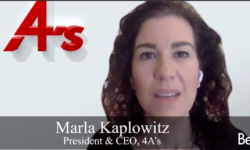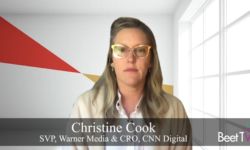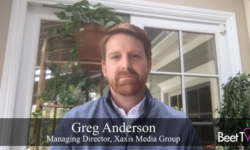At the start of the COVID-19 pandemic, many brands started running away from advertising in news publications, or using brand safety tools’ keyword blocking features to dodge coronavirus-related inventory.
But one of the world’s largest ad agency groups is now the latest to say they don’t need to skirt news.
In this video interview with Beet.TV, Yale Cohen, EVP of digital investment and standards at Publicis Groupe’s PMX, the Publicis Media Exchange, says keyword lists are crude, news inventory is effective and new semantic analysis tools can make it even more so.
‘Don’t avoid news’
U.S. Ad Market Plummets 35% In April, Second Consecutive Month Of Faltering Demand: Ad demand fell 35% year-over-year in April, marking its lowest point since MediaPost and Standard… https://t.co/JHlO94rH1y @mp_joemandese
— Digital Content Next (@DCNorg) May 21, 2020
“Brands should really try not to avoid news. It’s a safe, engaging environment,” Cohen says.
“We’ve definitely seen performance in news, it’s very engaging. You see the same type of opinions, controversy, debate in our political sphere in and around coronavirus. It’s definitely an area a client should not be avoiding.”
Recent Integral Ad Science (IAS) research suggests keyword blocking of COVID-19 terms by ad buyers has been reduced by 88% – but not before advertiser behavior tore through publishers’ ad revenue.
Now many newsrooms are bloodied in red ink, the victims of a dichotomy – audience traffic is booming, but monetization opportunities have slimmed, and ad rates are getting pushed down in pursuit of dollars.
Keyword ‘myths’
“There’s a few myths about what the capabilities of keywords are,” Publicis’ Cohen adds. “In most cases, it’s just controls and settings for the URL and not the actual content of the article.
“We’ve always recommended that advertisers take a nuanced approach for their specific brands to keywords. The idea of having a list that is 3,000 keywords long, it doesn’t take into account the semantic analysis and the innovation that’s happened in the last year.”
He is talking about semantic analysis, a branch of machine learning that can return several indicators about the real context and intent inside content, beyond one-dimensional descriptive keywords.
Several ad-tech vendors are now offering such tools to publishers, with which to offer the more “nuanced” buying signals Cohen is talking about. He thinks it is a game-changer.
“It sets you apart, being able to show up in areas where there could be positive stories around certain topics that you may think were negative based on the keywords,” Cohen says.
Rebooting brand safety
https://twitter.com/integralads/status/1240415295862460416
Decisions to swerve certain news stories are often made under the guise of “brand safety” concerns. Many brands have believed consumers would look negatively on them for virus adjacency.
But, even early in the pandemic, there was research around which showed the opposite – far from reacting negatively, many consumers were increasingly seeking out coronavirus information from news organizations and from brands.
The semantic technology has the potential to reboot those “brand safety” concerns, which first emerged a few years ago, when brands discovered their ads running accidentally against alarming content.
Now, more in the industry are declaring all news is intrinsically “safe”, they are searching to establishing which individual pieces of content are “suitable”.
“We can all agree that news is brand-safe,” says Publicis’ Cohen. “It’s the suitability of the content (that matters). There are sophisticated tools that clients have at their fingertips and really we should invest responsibly.”
This video is part of a series titled Brand Suitability at the Forefront, presented by Integral Ad Science. For more segments from the series, please visit this page.








































